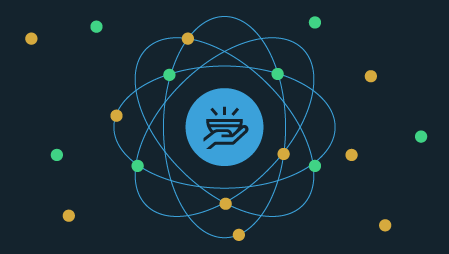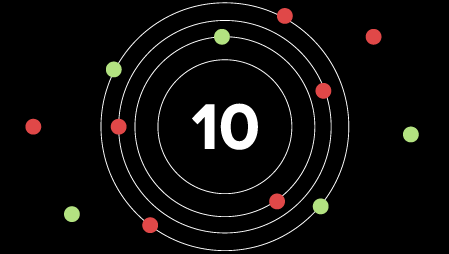Ready to learn Internet of Things? Browse courses like Internet of Things (IoT) Training developed by industry thought leaders and Experfy in Harvard Innovation Lab.

I don’t think anyone will argue that an IoT solution utilizes a ‘stack’ of services – in general; think of ‘thing’, network, infrastructure, data store, application and enterprise integration. A recent article from Strategy+Business titled Vertical Integration 2.0: An Old Strategy Makes a Comeback (http://bit.ly/2ziJemR) speaks to some of the drivers behind this approach, which they’ve relabeled the Full Stack Business Model.
Similar to past IT trends, we’re seeing this play out in the burgeoning IoT space as a number of company’s are creating and acquiring their way to a full stack offering – lets call them the ‘Full Stacks.’ The other end of the spectrum represents best of breed integrations that we’ll call the ‘Custom Stacks.’ Clients, such as OEM’s, seeking to develop an IoT solution are faced with a strategic decision of either buying a ‘Full Stack’ or assembling a ‘Custom Stack.’ Both approaches, and in between, require integration, a separate topic, but are viable options and all come with pros and cons.

Full Stacks – The Full-Stacks have a vision and future-state business model based on fully-integrated and in some cases rigidly engineered “stacks” of business functionality. These are complete and self-contained ecosystems of business or functional capabilities (like fleet management, supply chain control, flow optimization, predictive maintenance,…). Full Stacks can contain all of the modules, business logic, software, data, utilities, operating systems, servers, storage (whether cloud-based or not), containers, network connections, security, enterprise service management capabilities, and so on needed to function. All rigidly engineered for optimal performance and minimal customer care and maintenance. The stacks are not quite “airtight containers,” as they can be opened in a well-designed fashion to interface with other systems and infrastructures, or be modified as needed to adapt to changing business needs, technology advances, or contract terminations.
The Full Stacks like to use Apple’s self-contained ecosystem as an example (http://bit.ly/1FCoBAj). Customers love it, and do not feel threatened by its highly integrated nature. The larger business case made by the Full Stacks is that customer IT/OT organizations have historically attempted to take all of these complex integration challenges on themselves, and they have generally made a mess of it in the process. Therefore, central IT/OT budgets are vastly larger than they need to be, and almost all of this money goes to keeping these convoluted messes running, not in investing in innovations for the business constraining many companies in terms of such basics as agility and responsiveness.

Custom Stacks – The Custom Stacks take a different view suggesting customers cannot afford to get that deeply in bed with any one vendor, regardless of what they might say about their openness and connectivity. We’re reminded of what it was like to be locked-in to SAP’s mammoth, inflexible R/3 product or Microsoft’s rigid enterprise agreements and never-ending refresh cycles (http://bit.ly/24AjxYe). Their premise is to keep these various pieces separate so they can be provided on a more customizable, flexible basis to meet precise business needs. Best practices, like ITIL and DevOps, make integration, operation and support of these mixed infrastructures and services more rigorous and reliable. Conversely, those intricate, highly integrated stacks offered by the Full Stacks are far too complex to operate as advertised, may not be flexible enough to meet your business needs, and you don’t want to trust the family jewels to such a Rube Goldberg concoction. Remaining open to the best of the best and hedging your bets allows for access to leading service providers and integration partners to help navigate rapidly evolving changes in technologies and business needs intelligently, with required levels of agility.
As with any new technology or trend (although many might argue IoT is not new), companies pursuing an IoT solution should consider a number of critical variables that may inform their stack direction:
- Sourcing Posture – is IoT core to your business? Do you possess genuine ‘connected systems’ experience in your stable or will you have to rely on external resources?
- Intellectual Property – where will you establish IP?
- Integration – who will play the role of integrator?
- Deployment Models – 2-tier or 3-tier model? Do you anticipate driving intelligence to the edge? How will you ensure that logic stays in sync?
- Standards – given the lack of standards, what role will they play today and tomorrow?
- Connectivity – what protocol will you use to connect to your ‘thing’?
- Flexibility – what is your lock-in tolerance? Do you understand the key lock-in points?
- Network – coverage and performance requirements along with End of Life schedules for different technologies/spectrum?
- Service & Support – who will provide what levels for each layer of the stack?
To be clear, no single stack will win, although there are likely to be dominate stacks in particular industries. Regardless, of greatest importance for any company developing an IoT solution will be to ensure your system is designed for change and longevity.
Originally posted on LinkedIn



